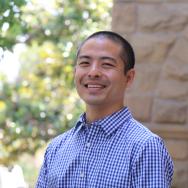Stanford e-Kobe Guest Speaker: Hinako Saldi Sato
Stanford e-Kobe is an online course for high school students in Kobe City, Japan. Launched in fall 2021, it is offered by the Stanford Program on International and Cross-Cultural Education (91│į╣Ž) in collaboration with the Kobe City Government. The Instructor of Stanford e-Kobe is Alison Harsch. One of the key themes of the course is diversity and focused her talk on womenŌĆÖs empowerment. 91│į╣Ž is grateful to Mayor Kizo Hisamoto for his vision and leadership, and to Superintendent Jun Nagata, Board of Education, for his unwavering support. 91│į╣Ž also greatly appreciates Toshihiro Nishiyama, Board of Education member, and Satoshi Kawasaki and Akito Ojiro, Kobe City staff, who serve as liaisons between 91│į╣Ž and the Kobe City Government.
Hinako Saldi Sato is musician, educator, marketer, and community leader with a passion to create opportunities and platforms for people around the world to connect and learn through music. After graduating from Berklee College of Music, Hinako gained recognition as a performer with internationally acclaimed acts such as , a collective of innovative musicians from across the globe. Between 2016 and 2019, Hinako helped to manage the Boston chapter of , which is dedicated to fostering equality in the music industry through the support and advancement of women. In January 2019, Hinako launched Women in MusicŌĆÖs first chapter in Japan, in hopes of contributing to creating a platform that would serve to advance and elevate womenŌĆÖs roles and voices in the music industry. Hinako now works as the marketing lead at the Tokyo-based Ableton KK, the Asia Pacific (APAC) division of the German music software/hardware company.
Hinako shared four reflections on her life experiences that clearly resonated in the 26 students in Stanford e-Kobe and especially among the girls.
- Hinako grew up in an environment where most musicians were male, and she was often the only girl in the room.
- She was fortunate to have been offered multiple opportunities to study and excel in her careerŌĆöthanks to schools, organizations, and communities that cared about diversity, equity, and inclusion (including being the recipient of both merit-based and need-based scholarships).
- She has witnessed so many women in her life who are struggling or are at disadvantages because of gender roles, gender bias, and other gender-based inequality.
- She didnŌĆÖt have a role model or someone who was like her until she went to the United States for high school and this reinforced her desire to advocate for greater representation among girls and women.
These four reflections continue to shape her mission in life in multiple ways. As a musician, she has performed with Women of the World, which showcases four different singers from the United States, India, Italy, and Japan. Currently, Women of the World performs in 37 different languages, and Hinako noted that ŌĆ£itŌĆÖs like youŌĆÖre in a musical journey around the world.ŌĆØ In teaching, her philosophy is that education is a lot about ŌĆ£leading outŌĆØ or reinforcing in people what potential they have and what they already know. As a community leader, she has organized groups such as Boston Joshikai, which has the goal of forming a sisterhood among Japanese women residents as a way to build their social capital. Boston Joshikai helps to fight the ŌĆ£scarcity mindsetŌĆØ that sometimes arises when one is a minority in a foreign country. As a public speaker at events such as the International Women in Business Conference 2018, she strives to encourage women to think beyond borders. Finally, at Ableton KK, an important focus of her work is about lowering barriers for people to enter the world of music-making through the use of music technology tools, especially in the education sector.
During the question-and-answer period, student Hinata Ogawa asked, ŌĆ£Can music contribute to womenŌĆÖs empowerment in some way?ŌĆØ Sato replied, ŌĆ£Yes, absolutely. Actually, at Women in Music in Japan we wrote an article about the history of feminism in the music industry, in which we were just touching upon this topic for the Japanese music scene. When you listen to Japanese pop music, for example, the lyrics are mostly about heterosexual relationships like romantic relationships right? But in the U.S., you see a lot of music that talks about female empowerment like BeyonceŌĆÖs ŌĆśRun the WorldŌĆÖ or you know like Sara BareillesŌĆÖ ŌĆśBrave.ŌĆÖŌĆ” There are many examples of how music can be used to empower not just women, but also certain minority groups. And in Japan, if you check out female rappers like hip hop scene, they are speaking out, talking about feminism in the form of rap and itŌĆÖs quite excitingŌĆ” like Daimon Yayoi.ŌĆØ
Other student questions and comments focused on the importance of expanding oneŌĆÖs circle or community; the importance of improving child care systems to help women in the workplace and to provide childcare leave systems for fathers; addressing stereotypes of women and the importance of mindset; and addressing gender bias in schools. Instructor Harsch commented, ŌĆ£Listening to the questions and comments by my students made me realize what a great role model Hinako is to them and other youth in Japan who have the good fortune to cross paths with her. Hinako was the final lecturer for this yearŌĆÖs class and I canŌĆÖt think of a more ideal lecturer given the way that she engaged them to critically think about gender-related issues and self-empowerment.ŌĆØ

Observing the class on womenŌĆÖs empowerment helped me realize that Stanford e-Kobe is empowering students to aspire to ŌĆ£BE KOBE,ŌĆØ the cityŌĆÖs civil pride message to gather the idea that what makes Kobe attractive is the citizens who are proud to take on new challenges. The BE KOBE Monument[1] was installed in the Meriken Park to commemorate the 150th anniversary of opening the Port of KOBE in 2017. I am very confident that the Stanford e-Kobe students will carry the spirit of BE KOBE into their very bright futures.
[1] Photo courtesy Kobe City Government.

Read More
Empowering Japanese women through community building

























